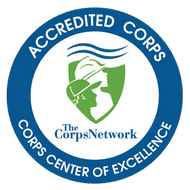Montana Conservation Corps crews engage in a wide variety of projects across many different landscapes. Not all crews will serve on all types of projects. Projects and crew types may shift during the season. Occasionally, crews may be deployed for natural disaster relief. Below are some examples of what you could be doing in the field.
Field Crews
Field Crews serve on conservation projects while camping together as a crew in locations throughout Montana, Wyoming, Idaho, and the Dakotas. Projects duties may include building or maintaining trails, treating or removing invasive species, building fences, operating chainsaws to reduce wildfire risks by thinning trees, among many other types of projects. Field Crews are a great fit for anyone looking to get exposure to a variety of conservation initiatives.
-
Trail Maintenance and Construction
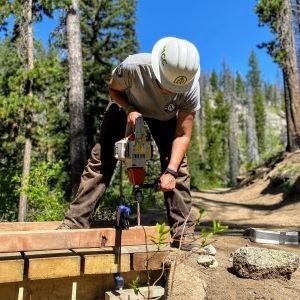
Our crews maintain the hiking, biking, stock, and ATV/Motorized trails the public loves to enjoy. The demands on our recreational infrastructure are at an all time high and the projects we complete are critical for the public to enjoy quality experiences on public lands. This could include:
- Clearing trails of downed trees using crosscut saws/chainsaws
- Cleaning out drainage structures such as waterbars and drain dips to keep the trail dry and help with erosion control
- Building bridges to help transport user groups across waterways
- Building turnpikes & puncheons to raise the trail surface in wet/muddy areas
- Brushing the trail corridor
- Building retaining walls to support the trail surface in vulnerable areas
-
"Cut and Run" with Crosscut Saws
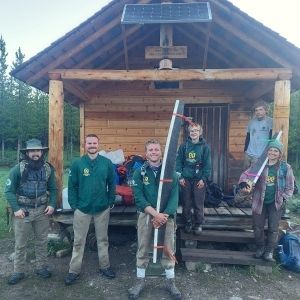
MCC crews do a lot of clearing of downed trees over the trail. We refer to these projects as "cut and run," because the crews clear as many trees as they can in a day, and move camp along the trail according to their progress. Clearing these trails is often one of the first things trail managers do in the early summer, and one of the most important pieces of maintenance to keep trails open for the public. Many of our field crews serve in specially designated Wilderness Areas where mechanized equipment is not allowed (like chainsaws). They must use primitive crosscut saws, hand saws, and axes to clear trees off the trail.
-
Backcountry Projects
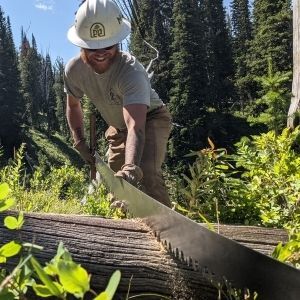
Many crews have the opportunity to serve in the “backcountry,” where you are on a site that is away from your MCC vehicle. This typically requires backpacking into the site.
These projects allow participants to explore some of the wildest land in the lower 48 states. Much of this takes place in designated Wilderness Areas, a special designation that provides an extra measure of protection to certain wild places.
Example Projects:
-
Adaptive Mountain Bike Trails with the Bureau of Land Management
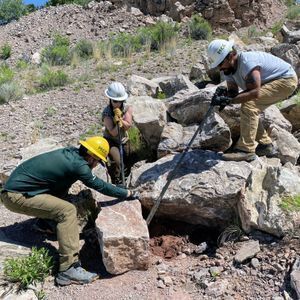
This Crew collaborated closely with the Bureau of Land Management to widen trails to accommodate adaptive bikes. This project allowed people with disabilities or limited mobility to be able to access the trail that previously was not wide enough for the adaptive bikes. They improved and dug new tread, and used large rocks to anchor the trail and provide stability. The crew constructed and improved a mile and a half of this trail for not only people who use adaptive bikes, but the Newcastle and mountain biking community in general.
-
ADA Trail in Glacier National Park
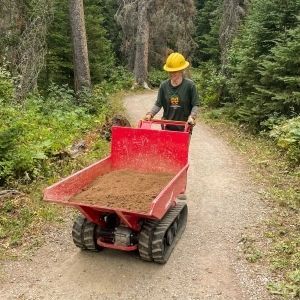
On this project, a crew collaborated with the National Park Service to create an American Disability Act (ADA) trail in Glacier National Park. This trail will provide more accessible hiking options in GNP for people with different disabilities. There aren't a whole lot of ADA trails within National Parks, and trails like this help provide access to a wider audience. The crew here is using “StaLok” paving material that creates a durable surface suitable for wheelchairs, but also a surface that is still natural soil, just enhanced. The soil's strength is increased and equal to that of asphalt while still retaining flexibility.
Check out this video of the process!
-
Restoring the Beaten Path
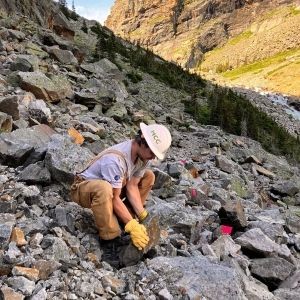
The Beaten Path traversing the Beartooth Plateau at 11,000’ is one of Montana’s most iconic and well-loved trails. Yet, in June of 2022, catastrophic flooding severely damaged portions of the route, leaving sections of the trail dangerous or impassable. Already a priority for the U.S. Forest Service, two tragic hiker accidents in the last two years are a reminder that restoring safe access to this popular area is imperative.
MCC crews are partnering with the USFS to continue efforts to rebuild this rugged wilderness trail. They’re blasting through rockslides, hauling tons of rock, and reshaping the tread by hand. All gritty, technical service that lays the foundation for a safer trail and improved public access to Rimrock Lake.
Forestry Crews
Forestry crews offer opportunities to gain considerable field experience in a variety of Forest Service timber management activities. Projects duties may include Tree Species ID, Timber Stand Assessment, Tree Marking, Timber Sale Boundary Marking, Tree Planting, Silviculture Prescriptions, Reforestation Plot Surveying, Chainsaw Operations/Maintenance, Precommercial Thinning, Fireline/Fuelbreak Operations, and more.
-
Tree Species ID and Timber Stand Improvement
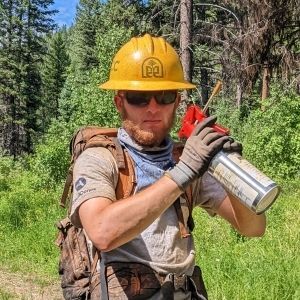
Forestry crews may receive training in identifying tree species in the Northern Rockies ecosystem. Crews could also receive training in timber stand assessment, determining a long term plan for the forest taking into account forest health, wildfire mitigation, and the economic value of the timber. This includes marking viable trees for removal or sale, controlling undesirable vegetation, and improving the stand for wildlife habitat.
-
Fuels Reduction or Fireline/Fuel Break Construction
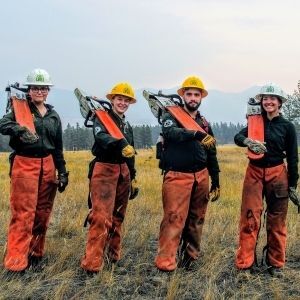
Some forestry crews' projects consist of heavy fuels reduction initiatives; using chainsaws to thin the forest in order to reduce the amount of fuels (trees, shrubs, brush) on the ground, thereby reducing the impact of wildland fire.
Some forestry crews learn to prep a unit for a prescribed burn through creating fuel breaks and constructing fireline to prevent prescribed burns from getting out of control. Prescribed burns are an essential component of healthy forests that are overgrown due to years of natural fire suppression.
-
Habitat Restoration
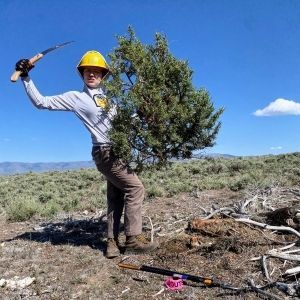
Some forestry crews utilize chainsaws to restore habitat. This can include removal of less desirable tree species to allow others to thrive or clearing out the understory to provide better wildlife habitat.
Example Projects:
-
Fuel Breaks & Fire Line with Spotted Bear Ranger District
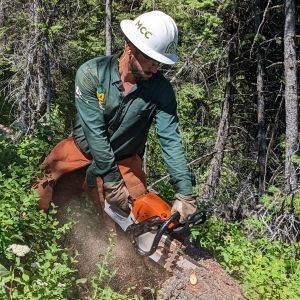
This crew collaborated with Spotted Bear Ranger District Fire to re-dig fire line around a unit they plan to do a prescribed burn on during the fall season. They also cleared fallen trees and woody debris from the fire line in two different work sites. Over all, they dug 0.26 miles of fire line as well as removed over 60 fallen trees, thereby protecting the surrounding forest from their planned prescribed burn.
They also created fuel breaks along roads in the area. This involved using chainsaws to eliminate any taller shrubs such as alder and maple, as well as any standing trees that were four inches in diameter or less. The finished product was an area that spanned roughly 20 feet away from the road that was thinned of trees and any taller brush. This will prevent future fires from "jumping" the road and burning other areas.
-
Reforestation Surveys on the Libby Ranger District
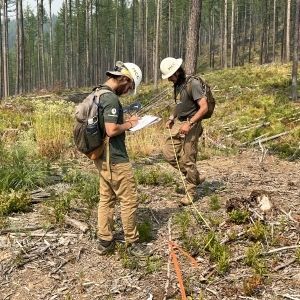
This crew served on the Libby Ranger District with the support of the district’s culturist to complete reforestation stocking surveys (refos) of areas that have experienced wildfire in recent years. For the Pipe Bull project, salvage harvesting and replanting with desired tree species were completed this spring. This crew completed refos to examine whether the planted seedlings were progressing or failing.
They completed refos for 32 units in this project. The other project area in which they worked was the Tamarack area, where some of the units had been planted while others were naturally regenerating. In each survey plot, the crew counted the number of trees, noted their health, and recorded conditions such as the presence of live overwood/cones, stockability, snags, rocks, and brush. Summaries and recommendations were then written for each unit. Overall, the crew completed a total of 36 units and 724 acres of surveying during this hitch.
-
Forestry Projects with the Kootenai National Forest
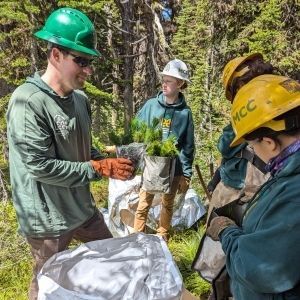
2024 Forestry Crew Member Grace remarked:
"Going into a forestry crew, I expected that my season would consist mainly of running chainsaws. But I have learned that there are so many other sides to forestry. Boundaries need to be marked for timber sales. Trees need to be assessed after forest fires. Trees need to be planted. Forests need to be surveyed.
Timber sale areas need to be cleared of debris. Downed trees need to be removed from paths and roads. Corridors of roads need to be widened. And of course, there is also work with chainsaws.
This role has introduced me to aspects of forestry that I hadn't considered. And allowed me to meet people working in many diverse roles related to forestry and conservation."
Trails and Fuels Crews
Trails and Fuels crews will likely have a high proportion of chainsaw use, fireline construction and other forest health monitoring activities. This may also include wildland fuels mitigation projects.
-
Fuels Reduction/Tree Thinning
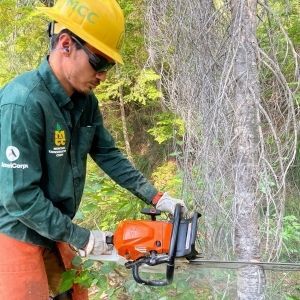
Projects for our trails and fuels crews consist of heavy fuels reduction tasks such as using chainsaws to thin the forest in order to reduce the amount of fuels (trees, shrubs, brush) on the ground, thereby reducing the impact of wildland fire.
-
Creating Slash Piles
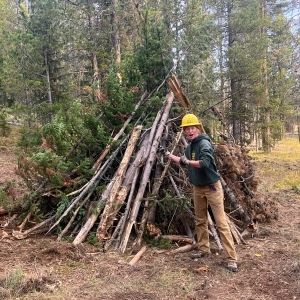
Crews often complete fuel reduction projects in many types of locations. These projects include cutting trees and shrubs and making slash piles to be burned later in the fall. This reduces the fuel load in the understory of the forest, giving wildland fire less "ladder fuels" (shrubs, smaller trees, and brush that help carry fire into the larger tree canopy). It also helps reduce the danger to nearby homes that exist within the Wildland Urban Interface.
-
Fireline Construction
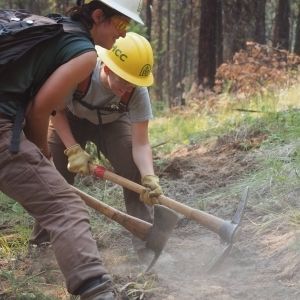
Some forestry crews learn to prep a unit for a prescribed burn through creating fuel breaks and constructing fireline to prevent prescribed burns from getting out of control. Prescribed burns are an essential component of healthy forests that are overgrown due to years of natural fire suppression.
Example Projects:
-
Conifer Removal in Butte
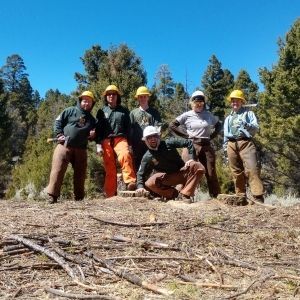
On this project, a crew was serving with the Bureau of Land Management (BLM) field office in Butte, MT to clear the encroachment of conifer trees from an area that is valued for winter Elk habitat. Removal of conifers enhances riparian vegetation, water availability, and reduces the fuels hazard from a fire prone region.
-
Conservation in the Blackfoot Valley
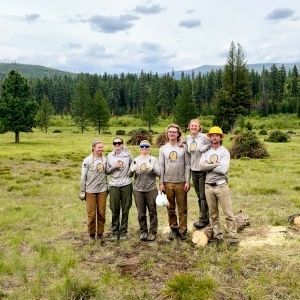
This crew has been serving with The Nature Conservancy in the Blackfoot Valley. The project's aim is to treat acres of forest in a way that will allow fire to move through the landscape, which doesn’t lead to catastrophic fire events. MCC crews utilize a mix of techniques to restore the forest, including tree thinning, prescribed burns, invasive species removal, and building beaver dam analog structures (BDAs). Most of the projects are located near the Wildland Urban Interface (WUI), where people’s homes are likely to be impacted by wildfire, or in areas of high ecological significance like old-growth forest or wet meadows.
-
Restoration with the BLM
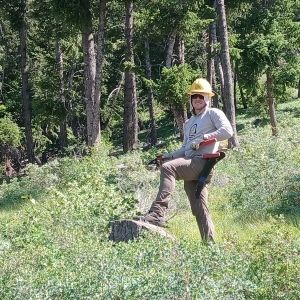
This crew served with the Bureau of Land Management in Twin Falls, Idaho to remove Douglas Fir trees that were encroaching on Aspen stands. They plucked, lopped, and sawed all they encountered -- provided they were under two inches DBH (diameter at breast height). The project served to promote Aspen groves, which benefit local wildlife, and to reduce the potential for particularly strong wildfires.
Wildland Restoration Teams
Wildland Restoration Teams collaborate with a diverse range of stakeholders (private, government, and non-profit) in order to achieve large scale land conservation efforts with rural communities throughout the state of Montana.
Wildland Restoration Teams (Bozeman, Kalispell, & Missoula) participate in the identification, treatment and inventory of invasive plant species. Utilizing chemical, mechanical and biological treatment techniques. Projects may include chainsaw use. Wetlands and habitat restoration projects: including managing invasive plants through herbicide application, seed collection, and/ or various stream restoration techniques listed below. Projects are often rigorous, requiring participants to carry a heavy backpack sprayer in hot weather across rugged terrain while wearing protective gear.
Wildland Restoration Teams - Mesic/Stream Restoration (Helena) participate in stream restoration that can include re-vegetation, early detection and rapid response of new invaders. Teams also complete beaver mimicry and in-stream beaver-dam analog construction, a simple, effective, and non-invasive approach to riparian restoration. This effectively slows down and spreads water over the landscape to expand critical habitat, mitigate wildfire, reduce invasive species and increase water availability in traditionally parched times of year. This position is based in Helena, MT with extensive travel throughout the central & eastern part of the state required.
-
Invasive Weed Management and Mapping
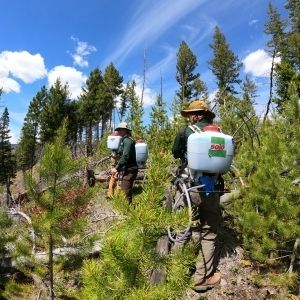
Managing invasive weeds is vital to the protection of native plants that wildlife rely on. This could involve hand pulling, applying herbicide, or biological control. Learn more about Montana invasive weeds here!
Many restoration crews utilize GPS and other techniques to help map invasive plants across the region. This is vital for federal and state agencies to understand the scope of invasive weeds in our area.
-
Planting and Seed Collection
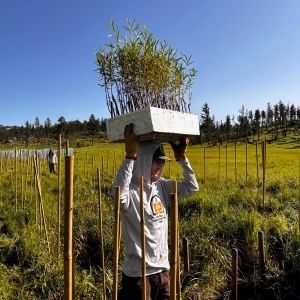
Restoration teams plant trees and shrubs for erosion control and habitat improvement, like rehabilitating a burned area or preventing erosion along stream banks. They also collect native seeds for use in future conservation and restoration projects.
-
Mesic Restoration (LTPBR; Low Tech Process Based Restoration)
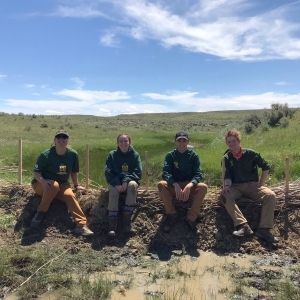
Mesic restoration involves utilizing low-tech process-based techniques to restore habitat. Structural-starvation of wood and beaver dams in riverscapes is one of the most common impairments affecting riverscape health. Crews construct BDAs (Beaver Dam Analogs) and PALS (post-assisted log structures). This involves collaborating with local ranchers, conservation districts, and community organizations. We have crews that do these projects for their entire season!
Example Projects:
-
Mesic Restoration with The Nature Conservancy
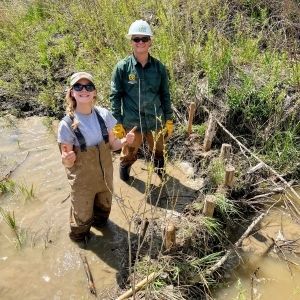
This crew spent a hitch in South Dakota building Beaver Dam Analogs (BDAs) with The Nature Conservancy. These low-tech, process-based restoration techniques are vital to watershed reparation. They constructed beaver dam analogs and post-assisted log structures. These structures are meant to slow down the flow of the stream, thereby raising the water table, controlling erosion, and promoting biodiversity. Here is what one of the Crew Members, Ella, had to say about their project:
"We were beavers for the week! On May 31st we made the 8-hour journey to Hot Springs, South Dakota where we were introduced to our project partner with the South Dakota Nature Conservancy. She taught us the basics of low-tech, process-based restoration and the importance of watershed reparation. Over 7 days we waded through waist deep water (only occasionally wearing waders), lugged around an 80 pound hydraulic post pounder, and almost lost a rain boot in the mud all in the name of conservation. And it was so worth it! We were able to see the effects of our BDAs almost immediately and observed evidence of beavers all along the bank. We're hopeful that the biodiversity of Cottonwood and Spring Creek will continue to improve from our mesic restoration efforts."
-
Spraying Invasive Weeds with the Gallatin Valley Land Trust

This Wildland Restoration Team collaborated closely with the Gallatin Valley Land Trust and the Rocking 406 Ranch to spray a variety of noxious weeds. They spent the majority of their time on thistle and hound's tongue, and covered over five hundred acres of the Rocking 406 Ranch. The ranch is strictly for conservation and is owned by the Gallatin Valley Land Trust. The removal of weeds and restoration of these lands allow for over one hundred species of birds and wild game to reside there, providing much needed wildlife habitat in the Greater Yellowstone Ecosystem.
Emily, a Crew Member on the crew, said "under the guidance of Mike Ellig, a board member of the Gallatin Valley Land Trust, we learned the ins and outs of fungi and bird species identification. Mike's dedication to conservation inspired us to continue our efforts of wilderness restoration, and we are looking forward to working with the Gallatin Valley Land Trust in the future. We take on the knowledge we learned from Mike with us as we travel to Little Big Horn National Battlefield to spray more noxious weeds!"
-
Post-Spray Surveying on the South Fork
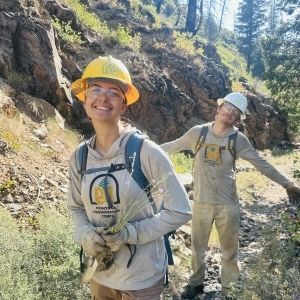
WRT member Emily recounted, "This hitch, we were able to go back to some of our old herbicide sites around the South Fork and do post-surveys. It was so cool to see how much our work has paid off. The sites looked amazing, and getting to do some post-treatments made it feel like we were really helping the land recover even more. Honestly, it’s been such a fun experience, and we’re lucky to have the best project partners— we absolutely love [them]!"

![[Image description: Six MCC members stand in a field, two holding large crosscut saws, and two with mattocks in their hands.]](https://cdn.firespring.com/images/1f7e3469-816d-46d2-9d4a-920931bac740.jpeg)

